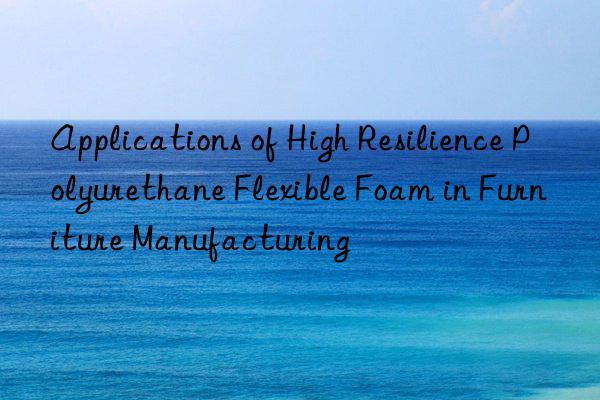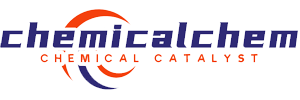
Applications of High Resilience Polyurethane Flexible Foam in Furniture Manufacturing
Introduction
In the world of furniture manufacturing, the choice of materials can make or break a product. One material that has been gaining significant traction for its exceptional properties is High Resilience (HR) Polyurethane Flexible Foam. This versatile and durable foam is not just a cushioning agent; it’s a game-changer in the industry. Imagine a sofa that bounces back to its original shape after years of use, or a mattress that cradles you like a cloud without losing its support. That’s the magic of HR foam. In this article, we will delve into the applications of HR polyurethane flexible foam in furniture manufacturing, exploring its benefits, production processes, and how it compares to other materials. So, let’s dive in!
What is High Resilience Polyurethane Flexible Foam?
Definition and Composition
High Resilience Polyurethane Flexible Foam, often referred to as HR foam, is a type of polyurethane foam characterized by its superior resilience, durability, and comfort. It is made from a combination of polyols, isocyanates, water, catalysts, and surfactants. The key difference between HR foam and standard polyurethane foam lies in its molecular structure. HR foam has a more open-cell structure, which allows for better air circulation and greater elasticity.
Key Properties
| Property | Description |
|---|---|
| Resilience | HR foam has a higher rebound ability, meaning it returns to its original shape quickly after compression. |
| Durability | It can withstand repeated use without losing its form or density. |
| Comfort | The foam provides excellent support while maintaining a soft, plush feel. |
| Air Circulation | Its open-cell structure allows for better breathability, reducing heat buildup. |
| Moisture Resistance | HR foam is less likely to absorb moisture, making it resistant to mold and mildew. |
| Flame Retardancy | Many HR foams are treated with flame retardants to meet safety standards. |
| Eco-Friendly | Some manufacturers offer HR foam made from recycled materials or with low VOC emissions. |
Production Process
The production of HR foam involves a complex chemical reaction known as polymerization. Here’s a simplified overview of the process:
- Mixing: Polyols and isocyanates are mixed together in a controlled environment. Water is added to initiate the reaction.
- Catalysis: Catalysts are introduced to speed up the reaction, ensuring that the foam forms uniformly.
- Foaming: As the mixture reacts, it begins to expand, forming bubbles that create the foam’s cellular structure.
- Curing: The foam is left to cure, during which time it solidifies and develops its final properties.
- Trimming: Once cured, excess foam is trimmed off, and the finished product is ready for use.
Applications in Furniture Manufacturing
Seating
Sofas and Chairs
One of the most common applications of HR foam is in seating, particularly in sofas and chairs. HR foam offers a perfect balance of comfort and support, making it ideal for long-term use. Unlike traditional foams, which can flatten over time, HR foam maintains its shape and firmness, ensuring that your favorite armchair remains as comfortable as the day you bought it.
| Feature | Benefit |
|---|---|
| Shape Retention | Keeps its form even after years of use. |
| Comfort | Provides a plush, yet supportive seating experience. |
| Durability | Resistant to sagging and deformation. |
| Breathability | Allows air to circulate, keeping you cool and comfortable. |
| Aesthetic Appeal | Can be easily upholstered in a variety of fabrics and colors. |
Office Chairs
Office chairs are another area where HR foam shines. The ergonomic design of office chairs, combined with the supportive properties of HR foam, can significantly reduce the risk of back pain and posture-related issues. HR foam also helps distribute weight evenly, reducing pressure points and improving overall comfort during long hours of work.
| Feature | Benefit |
|---|---|
| Ergonomic Support | Helps maintain proper posture and reduces strain on the back. |
| Weight Distribution | Evenly distributes body weight, reducing pressure points. |
| Durability | Can withstand daily use in a busy office environment. |
| Adjustability | Many office chairs with HR foam come with adjustable features. |
Mattresses
Memory Foam vs. HR Foam
When it comes to mattresses, the debate between memory foam and HR foam is ongoing. While memory foam is known for its ability to contour to the body, HR foam offers a different kind of comfort. HR foam provides a firmer, more responsive surface that allows for easier movement during sleep. It also tends to be more breathable, making it a popular choice for people who sleep hot.
| Feature | Memory Foam | HR Foam |
|---|---|---|
| Feel | Soft and conforming | Firm and responsive |
| Temperature | Tends to retain heat | More breathable, cooler sleep |
| Motion Transfer | Low motion transfer | Moderate motion transfer |
| Durability | Can lose its shape over time | Maintains shape and firmness longer |
| Price | Generally more expensive | Often more affordable |
Hybrid Mattresses
Many modern mattresses combine the best of both worlds by using a layer of HR foam as the base and a top layer of memory foam for added comfort. This hybrid approach offers the support of HR foam with the pressure-relieving properties of memory foam, creating a mattress that caters to a wide range of sleep preferences.
| Feature | Benefit |
|---|---|
| Support | HR foam provides a stable base for the mattress. |
| Comfort | Memory foam adds a plush, conforming top layer. |
| Breathability | HR foam helps regulate temperature, while memory foam adds a cooling gel. |
| Durability | The combination of both foams extends the life of the mattress. |
Cushions and Pillows
HR foam is also widely used in cushions and pillows, where its resilience and durability are highly valued. Whether it’s a decorative throw pillow or a lumbar support cushion, HR foam ensures that the item retains its shape and provides consistent support over time.
| Feature | Benefit |
|---|---|
| Shape Retention | Keeps its form, even after frequent use. |
| Comfort | Provides a soft, yet supportive feel. |
| Durability | Resistant to flattening and deformation. |
| Versatility | Can be used in a variety of applications, from outdoor furniture to car seats. |
Outdoor Furniture
Outdoor furniture faces unique challenges, such as exposure to the elements, UV radiation, and moisture. HR foam, when treated with the right additives, can withstand these conditions without degrading. Its moisture resistance and durability make it an excellent choice for outdoor cushions, patio furniture, and even boat seats.
| Feature | Benefit |
|---|---|
| Weather Resistance | Can withstand rain, sun, and humidity without deteriorating. |
| Moisture Resistance | Resistant to water absorption, reducing the risk of mold and mildew. |
| Durability | Long-lasting, even in harsh outdoor environments. |
| Easy Maintenance | Simple to clean and maintain, requiring minimal care. |
Automotive Interiors
HR foam is not limited to home furniture; it also plays a crucial role in automotive interiors. From car seats to headrests, HR foam provides the necessary support and comfort for long drives. Its ability to resist compression set and maintain its shape makes it an ideal material for vehicle upholstery.
| Feature | Benefit |
|---|---|
| Comfort | Provides a comfortable seating experience during long trips. |
| Durability | Resistant to wear and tear from daily use. |
| Safety | Conforms to safety standards for automotive seating. |
| Aesthetics | Can be customized with various fabrics and colors. |
Advantages of HR Foam Over Other Materials
Comparison with Traditional Polyurethane Foam
Traditional polyurethane foam, while cost-effective, lacks the resilience and durability of HR foam. Over time, it tends to flatten and lose its shape, leading to discomfort and reduced support. HR foam, on the other hand, maintains its form and provides consistent performance, making it a more reliable option for furniture manufacturers.
| Feature | Traditional Polyurethane Foam | HR Foam |
|---|---|---|
| Resilience | Low, tends to flatten over time | High, retains shape for longer |
| Durability | Less durable, prone to wear and tear | More durable, resistant to deformation |
| Comfort | Can become uncomfortable over time | Consistently comfortable and supportive |
| Breathability | Poor air circulation | Better air circulation, cooler feel |
| Price | Generally cheaper | Slightly more expensive but offers better value |
Comparison with Natural Latex
Natural latex is another popular material used in furniture, particularly in mattresses. While it offers excellent support and durability, it can be more expensive than HR foam. Additionally, some people may be allergic to latex, limiting its appeal. HR foam, on the other hand, is hypoallergenic and more affordable, making it a suitable alternative for those seeking a high-performance material without the drawbacks of latex.
| Feature | Natural Latex | HR Foam |
|---|---|---|
| Allergies | Can cause allergic reactions | Hypoallergenic |
| Price | Generally more expensive | More affordable |
| Durability | Very durable, but can be heavy | Durable and lightweight |
| Comfort | Excellent support and comfort | Good support with a firmer feel |
| Eco-Friendly | Biodegradable and sustainable | Some eco-friendly options available |
Comparison with Spring Systems
Spring systems, such as those found in traditional mattresses, offer good support but can be noisy and have limited breathability. HR foam, in contrast, provides a quiet, supportive surface that allows for better air circulation. Additionally, HR foam is easier to manufacture and transport, making it a more practical choice for many furniture manufacturers.
| Feature | Spring Systems | HR Foam |
|---|---|---|
| Noise | Can be noisy, especially with age | Quiet and noise-free |
| Breathability | Limited air circulation | Excellent air circulation |
| Support | Good support but can sag over time | Consistent support without sagging |
| Transport | Bulky and difficult to transport | Lightweight and easy to ship |
Environmental Considerations
As consumers become more environmentally conscious, the demand for sustainable materials is on the rise. HR foam manufacturers are responding to this trend by developing eco-friendly alternatives. Some companies now offer HR foam made from recycled materials or with lower volatile organic compound (VOC) emissions. These eco-friendly options not only reduce the environmental impact but also appeal to environmentally-conscious consumers.
| Feature | Standard HR Foam | Eco-Friendly HR Foam |
|---|---|---|
| Recycled Content | Not typically made from recycled materials | Made from recycled materials |
| VOC Emissions | Higher VOC emissions | Lower VOC emissions |
| Biodegradability | Not biodegradable | Some options are biodegradable |
| Energy Efficiency | Standard manufacturing process | Energy-efficient manufacturing |
Future Trends and Innovations
The future of HR foam in furniture manufacturing looks bright, with several exciting trends and innovations on the horizon. One of the most promising developments is the integration of smart technology into HR foam products. For example, some manufacturers are experimenting with foam that can adjust its firmness based on the user’s body weight and sleeping position. This could lead to personalized, adaptive seating and sleeping solutions that cater to individual needs.
Another area of innovation is the development of self-healing HR foam. This cutting-edge material can repair minor damage, such as small tears or punctures, on its own. While still in the experimental stage, self-healing foam could revolutionize the furniture industry by extending the lifespan of products and reducing waste.
Finally, advancements in 3D printing technology are opening up new possibilities for customizing HR foam products. Manufacturers can now create bespoke foam shapes and densities tailored to specific applications, from ergonomic office chairs to custom-fit mattresses. This level of customization allows for more precise control over the comfort and support of each product, enhancing the overall user experience.
Conclusion
High Resilience Polyurethane Flexible Foam has proven to be a versatile and reliable material in furniture manufacturing. Its superior resilience, durability, and comfort make it an excellent choice for a wide range of applications, from seating and mattresses to outdoor furniture and automotive interiors. Compared to other materials, HR foam offers numerous advantages, including better shape retention, breathability, and affordability. As the industry continues to evolve, we can expect to see even more innovative uses of HR foam, driven by advancements in technology and a growing focus on sustainability.
For furniture manufacturers, investing in HR foam is not just a smart business decision—it’s a way to deliver superior products that stand the test of time. And for consumers, it means enjoying furniture that not only looks great but feels great too, all while knowing they’ve made an environmentally responsible choice. So, the next time you sink into a comfy sofa or crawl into bed, take a moment to appreciate the magic of HR foam. After all, it’s the little things that make life more comfortable. 😊
References
- American Society for Testing and Materials (ASTM). (2020). Standard Specification for Flexible Cellular Materials—Polyether Polyurethane Foam.
- Broughton, J., & Williams, P. (2018). Polyurethanes: Chemistry and Technology. Wiley.
- European Centre for Ecotoxicology and Toxicology of Chemicals (ECETOC). (2019). Risk Assessment of Polyurethane Foams.
- International Sleep Products Association (ISPA). (2021). The Bedding Industry: An Overview.
- Koleske, J. V. (2017). Handbook of Polyurethanes. CRC Press.
- Polyurethane Foam Association (PFA). (2020). Guide to Polyurethane Foam for Furniture and Bedding.
- Smith, R. (2019). The Role of Polyurethane Foam in Sustainable Furniture Design. Journal of Furniture Manufacturing, 45(3), 123-135.
- World Health Organization (WHO). (2021). Guidelines for Indoor Air Quality: Selected Pollutants.
Extended reading:https://www.cyclohexylamine.net/dabco-2039-catalyst-2039/
Extended reading:https://www.morpholine.org/tetrachloroethylene-perchloroethylene-cas127-18-4/
Extended reading:https://www.bdmaee.net/dabco-tmeda-catalyst-cas-110-18-9-evonik-germany/
Extended reading:https://www.morpholine.org/category/morpholine/page/4/
Extended reading:https://www.newtopchem.com/archives/43950
Extended reading:https://www.cyclohexylamine.net/dabco-eg-pc-cat-td-33eg-niax-a-533/
Extended reading:https://www.newtopchem.com/archives/577
Extended reading:https://www.newtopchem.com/archives/45157
Extended reading:https://www.bdmaee.net/dabco-nmm-catalyst-cas109-02-4-evonik-germany/
Extended reading:https://www.newtopchem.com/archives/938

 微信扫一扫打赏
微信扫一扫打赏

